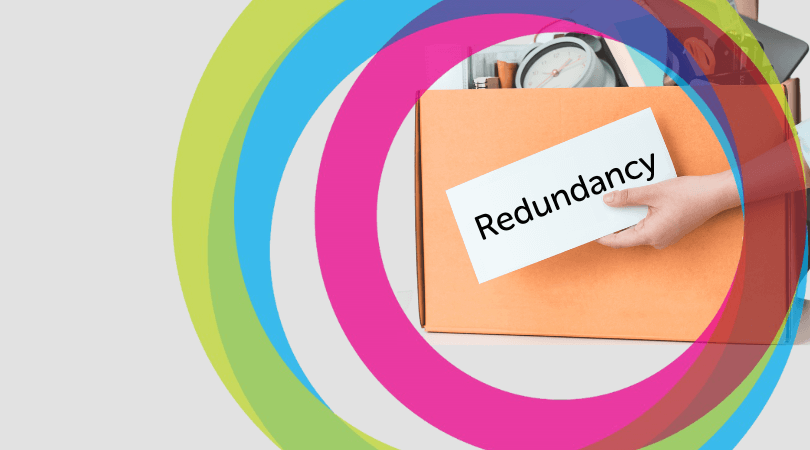Who Pays Redundancy Money? Recognizing Employer Responsibilities in the UK
Who Pays Redundancy Money? Recognizing Employer Responsibilities in the UK
Blog Article
Checking Out the Operational Dynamics of Company Redundancy and Its Long-Term Sustainability

Redundancy Methods for Organization Connection
In order to make certain uninterrupted procedures, services should apply reliable redundancy techniques for service continuity. Redundancy in this context refers to the duplication of important parts or functions within a system to minimize the influence of prospective failures. By including redundancy strategies, organizations can enhance their strength against disruptions triggered by different elements such as all-natural calamities, tools failings, or cyber-attacks.
One usual redundancy strategy is the application of back-up systems and information storage services. This includes creating matches of important data and systems that can be activated in situation of a primary system failure. Additionally, organizations can develop repetitive interaction networks and power resources to preserve connectivity and operations throughout unforeseen events.
In addition, cross-training employees to carry out multiple duties within the company can work as a valuable redundancy approach. This makes certain that crucial tasks can still be accomplished also if essential personnel are not available because of ailment or other factors. Generally, reliable redundancy methods are important for companies to promote operational connection and reduce the impact of possible disturbances.
Influence of Redundancy on Business Strength
Given the essential function redundancy methods play in ensuring company continuity, discovering the impact of redundancy on organizational durability comes to be crucial for recognizing the alternative functional characteristics of a business. Organizational strength refers to an entity's capacity to adjust to interruptions, recover from obstacles, and transform when required while maintaining core features. Redundancy, when purposefully implemented, can dramatically add to enhancing an organization's resilience despite unexpected obstacles. By having backup systems, personnel, or processes in position, firms can better withstand shocks and proceed procedures with marginal disruption.
Furthermore, redundancy can foster development and imagination within an organization as employees really feel equipped to take computed threats, understanding that there is a security net to support them in case of Recommended Reading failing. Overall, the impact of redundancy on business durability is profound, shaping the lasting sustainability and success of a company.
Balancing Effectiveness and Flexibility in Redundancy
Achieving a harmonious balance in between functional efficiency and adaptive adaptability is an essential difficulty in the critical implementation of redundancy within companies. As well much adaptability without a solid functional foundation can result in inadequacies and disparity.
To stabilize performance and adaptability in redundancy planning, organizations must carefully analyze their functional requirements, market characteristics, and critical goals. Implementing lean techniques can boost efficiency by improving procedures and removing waste, while fostering a culture of versatility and continuous renovation can enhance flexibility. Furthermore, purchasing cross-training programs and durable interaction networks can help grow a flexible labor force qualified of taking care of varied tasks throughout periods of shift. Inevitably, discovering the appropriate equilibrium in between performance and flexibility is crucial for developing a resistant Your Domain Name and sustainable organization in the face of unpredictability.
Long-Term Sustainability Through Redundancy Preparation
To make certain long-lasting stability and security, companies have to purposefully align their redundancy planning with long-term sustainability goals, consequently balancing functional effectiveness with adaptive flexibility. Companies need to see redundancy not as a reactive remedy to instant problems yet as a positive strategy for long-lasting success.

Proactive Procedures for Sustainable Company Procedures
Just how can firms proactively enhance their operational sustainability for long-lasting success? Applying aggressive measures is important for business aiming to guarantee sustainable operations.
In addition, promoting a culture of continual enhancement and discovering within the company can improve versatility to changing market problems and client demands. Urging employee participation in decision-making processes and providing opportunities for professional advancement can enhance spirits, efficiency, and total efficiency. Establishing clear goals, keeping an eye on essential performance indicators, and regularly assessing progression are essential parts of proactive sustainability monitoring.
Working together with distributors, customers, and other stakeholders to advertise lasting practices throughout the supply chain can create a surge result of favorable impact - redundancy pay if company goes bust. By taking positive steps in the direction of functional sustainability, business can construct durability, drive technology, and secure their lasting success in an ever-evolving business landscape
Conclusion

In the realm of organizational administration, the tactical implementation of business redundancy stands as an essential yet detailed technique that demands a delicate equilibrium between functional efficiency and long-lasting viability. By dissecting the functional dynamics that underpin business redundancy and assessing its wider effects for organizational resilience and flexibility, a nuanced understanding of how redundancy techniques can shape the future trajectory of a company begins to unravel.Offered the essential duty redundancy techniques play in guaranteeing business continuity, checking out the influence of redundancy on business durability comes to be important for recognizing the all natural functional dynamics of a firm. In general, the effect of redundancy on organizational durability is extensive, shaping the lasting sustainability and success of a company.
In conclusion, recognizing the functional characteristics of firm redundancy is crucial for ensuring long-lasting sustainability.
Report this page